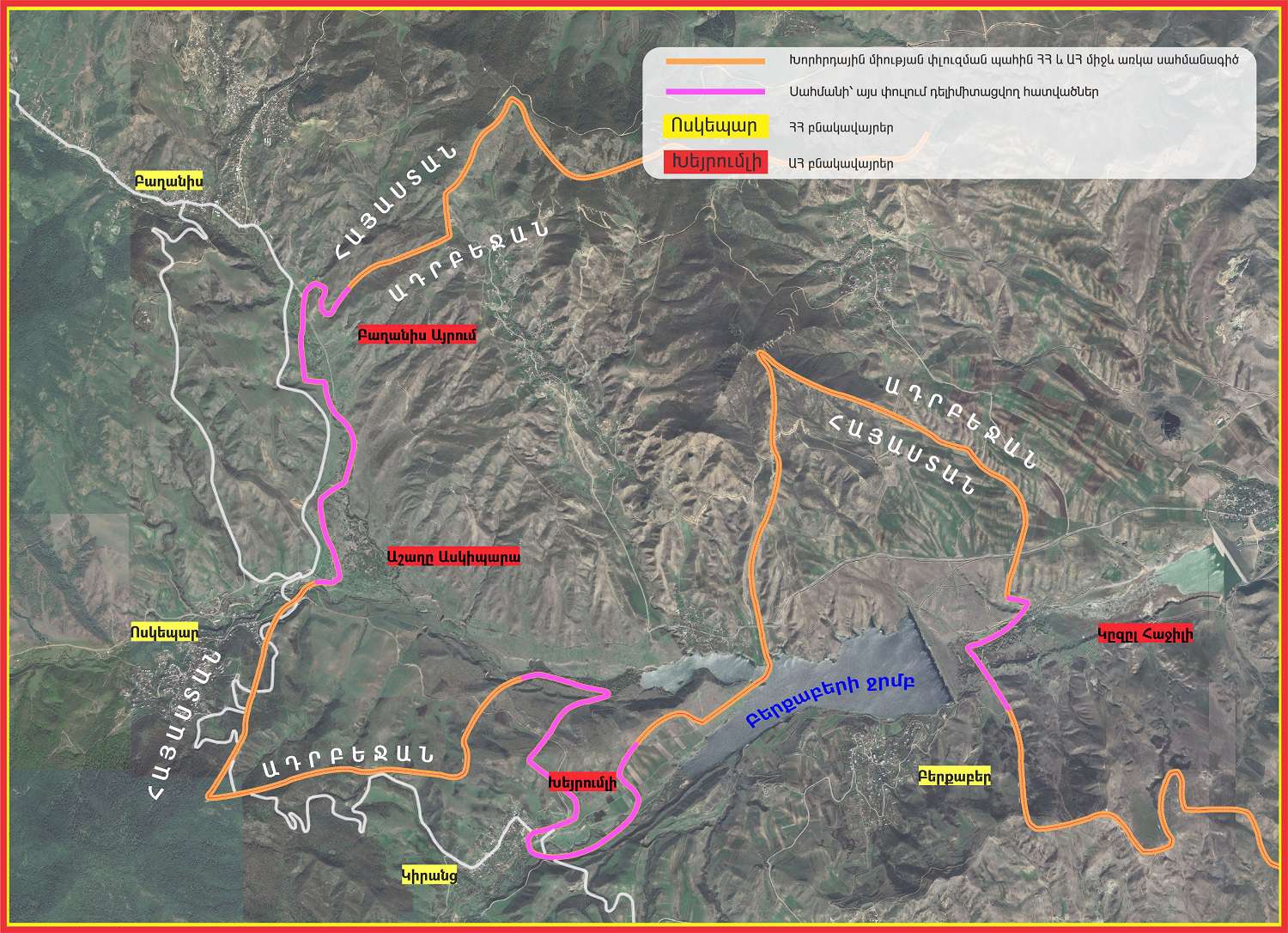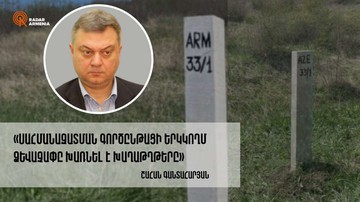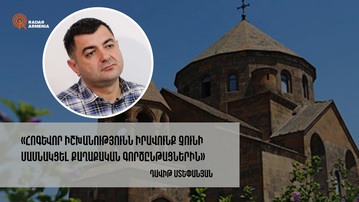The Prime Minister's Office's Information and Public Relations Department answered Armenpress's written questions.
Question: After the meeting held today, the commissions of Armenia and Azerbaijan on the demarcation of the state border issued a joint press release in which it is said that they have initially agreed on Baghanis of Armenia, Baghanis-Ayrum of Azerbaijan, Voskepar of Armenia, Ashagh Askipara of Azerbaijan, Kirants of Armenia, Khairemli of Azerbaijan, and Armenia Berkaber, the border crossing between the villages of Kizil Hajili, Azerbaijan. What does this mean:
Answer: The statement means that the two commissions have reproduced on the map the borders between the villages mentioned above that existed during the Soviet Union. In the next step, these borders should be clarified and expressed on the ground as well, and this will be an unprecedented event. For the first time between our countries, there will be a demarcated state border in the area of four villages.
Question: Based on which year's maps is this process carried out?
Answer: The cartographic basis of the process is the most recent topographical maps with the legal basis of the USSR period, which were compiled by bodies with such authority. The critical detail is that, according to the statement issued by the Commissions, the legal borders that existed at the time of the collapse of the Soviet Union are being restored. The borders de jure existed between Soviet Armenia and Soviet Azerbaijan. It is also essential to record that the Commissions agreed that the entire border demarcation process between Armenia and Azerbaijan will be based on the 1991 Alma-Ata Declaration, a fundamental principle of the border demarcation process. This principle should also be recorded in the Regulation of the Border Delimitation Process, which will be agreed upon between the parties in the coming months, and the necessary domestic agreements, including the approval process in parliament.
Question: Today's statement also states that if a fundamental principle different from the Alma-Ata Declaration is recorded in the Peace Treaty between Armenia and Azerbaijan, the Regulation of Border Demarcation will be by that principle. Does this not constitute grounds for renouncing the Declaration of Alma-Ata?
Answer: No. The commissions noted that they are not a negotiating format for the Peace Treaty. That treaty is negotiated in a different format and will have a higher status after it enters into force; if it turns out that the Regulation conflicts with a document of higher legal significance, it should be brought into line with it because, to repeat, the status of the Peace Treaty is much higher. The Alma-Ata Declaration is fundamental for regulating relations between Armenia and Azerbaijan, and it has already been agreed upon at the highest level as a basic principle.
Question: What does the issue of enclaves/exclaves mean in the joint press release of the Border Delimitation Commissions?
Answer: The commissions agreed that after the approval of the regulations, they will decide on the order of differentiation of the remaining sections of the Armenia-Azerbaijan state border (that is, which sections of the border will be reproduced next), and in this context, they will also address the issue of enclaves/exclaves. The Republic of Armenia cannot refuse this issue because Artsvashen is part of our country's sovereign territory. We are going to de jure justify the existence of the Artsvashen exclave/enclave in the demarcation process, and the RA government has such justifications, after which the actual demarcation process around Artsvashen will be carried out. What kind of political solution will the problem get after this protocol? That is a different question. In the delimitation process, the existence of the exclave/enclaves must first be justified de jure.
Question: After demarcation, the armed forces will withdraw from four villages and give way to the border guard troops. When will this happen?
Answer: It will happen within a short but reasonable time without artificial delays.
Question: Due to the process, are any villages in Armenia deprived of roads?
Answer: No. In the section of the village of Kirants, several hundred meters of the road outline will be changed, which is not difficult work and will be carried out in a few months. But this is not the only way for Kirants. The Kirants-Acharkut-Ijevan road will be repaired, maybe rebuilt as well. We mean, Kirants also has an alternative road, and practically, there are no significant problems.
Question: And Voskepar doesn't have road problems?
Answer: No. At this stage, areas that have the potential to cause such a problem still need to be delineated.
Question: As a result of this border liberalization process, Azerbaijan will be near the villages of Kirants and Voskepar in several areas. How will the security of these villages be ensured?
Answer: First of all, let's record that Azerbaijan is still very close to those villages today, and they are under direct fire. As a result of this process, Azerbaijan's border guard service will get closer to the towns of Kirants and Voskepar. Still, they will be separated from our villages by a demarcated state border. This is a crucial factor, and let's remember that the border guards of the Republic of Armenia will carry out border protection. However, many security details will also be discussed and detailed shortly.
Question: According to the described process, Azerbaijan receives four villages. What does Armenia get?
Answer: For the sake of accuracy, let's record that Azerbaijan gets two and a half villages belonging to it because the entire territory of the town of Kizl Hajli, a significant part of the territory of the village of Ashagh Askipara was under the control of Azerbaijan until now. In this process, the Republic of Armenia has reduced security risks related to border demarcation. With today's event, as already mentioned above, we have a demarcated border with Azerbaijan for the first time, which can be described as a significant event. The Republic of Armenia also gets an active platform and an opportunity to organize the boundary in a civilized and legitimate way and to implement it, providing the necessary security and social and legal guarantees for the population.



















